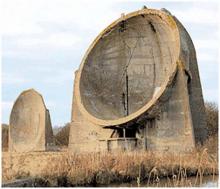All things mineral will be celebrated this weekend of (25 – 27 September), as the biannual
Mineral operating companies and industry representative bodies will be opening up quarries and running events to show people the behind-the-scenes operation of this major industry whose activities are often essential for supplying many of the day-to-day products we take for granted.
But there is also a unique side to the sector, which is becoming increasingly recognised. With some 7200 mineral sites representing in excess of 250,000 hectares of land across Europe, the industry has the potential to give something back to nature and local communities during the operational and post-extraction phases of its work cycle, on a scale which many other industries could not rival.
Under its obligation to restore the land it has worked, the minerals industry, in partnership with stakeholders, is already creating some priority, rare habitats; helping to protect and recover endangered species along the way and providing knock-on benefits for local communities, in the process.
But with the scale of its operations, the industry has the potential to do even more, creating priority habitat across large swathes of land for nature to re-colonise and people to access. As it does so, worrying declines in biodiversity could be halted and reversed and people could be given the opportunity to re-connect with nature on their doorsteps.
It is this potential which RESTORE - the northwest European partnership project - has been working to highlight and see translated into action for nature and people, on the ground.
In Maastricht, RESTORE partner ENCI Foundation is working with local government, community and conservation groups to return land at its limestone quarry site, to nature and public-amenity use.
In recent months, an ambitious, visionary operation has been underway to construct a state-of-the-art stairway, descending some 40 metres down from the site’s cliff face to the quarry floor. This stairway will re-connect the landscape, enabling local people to rediscover the route of an ancient pilgrims’ way which once linked Maastricht with Liege and affording easier access to the surrounding natural environment.
The site is home also to breeding eagle owls in an area already given over to nature conservation. Restoration work to create calcareous grassland on worked-out land will further help safeguard their future as well as that of many other plant, bird and mammal species.
With additional plans in place to restore the site to enable green leisure activities to take place (hiking, swimming, cycling) and to provide facilities for light industry and commerce, the post-operational prospects for this quarry and its ability to make a positive contribution to the local economy, are also looking good.
In the run up to this celebratory day, Peter Mergelsberg, director at the ENCI Foundation, said: “This site has had so much to offer in terms of supplying raw materials for the neighbouring region and now offers an extra opportunity for people and nature to benefit, way into the future. Once we have helped provide the materials which the local infrastructure needs, this industry -working in partnership with others - is able to offer yet more again in terms of added benefits and value for people and the natural environment, through appropriate, sustainable restoration.”
Across the border in neighbouring Belgium, another RESTORE partner – VLM, the Flemish Land Agency – is co-ordinating efforts to test innovative methods for nature management and to up-date and build on earlier and on-going restoration of a former clay extraction site at ‘t Pompje in West Flanders. The creation of improved wetland habitat (salt meadow and reed marsh) at this site will greatly enhance colonisation prospects for threatened species such as bittern, western marsh harrier, avocet and other wetland habitat specialists. Public interpretation boards have also been erected to help increase public awareness of the natural heritage of the site.
In the U.K., Surrey County Council is working with stakeholders in the east of the county, creating mineral restoration benefits for both people and nature across the landscape. Working closely with Sibelco at its sand pits at North Park Farm, the Council is piloting work to buffer existing nature restorations on operators’ non-operational land. Approximately 11,400 trees are being planted by community groups across 4km of the countryside, creating natural corridors for wildlife to move along and for people to enjoy.
Looking forward to European Minerals Day 2015, June Laban-Mitchell, RESTORE project co-ordinator, commented: “At a time when a light is being shone on the work of the minerals industry across Europe, let’s remember the way in which both people and the natural environment can also benefit from the activities of this sector.
“Minerals restoration, done in the right way and in close co-operation with others, represents such a major opportunity for nature to make a comeback on a unique, large scale and for people to engage with their local, natural surroundings in a way which will enhance their feelings of well-being and connection with the environment.”








